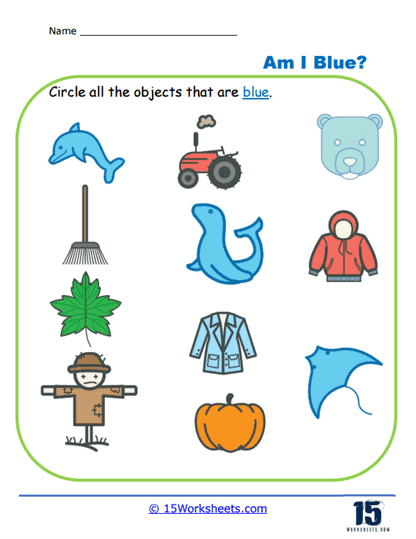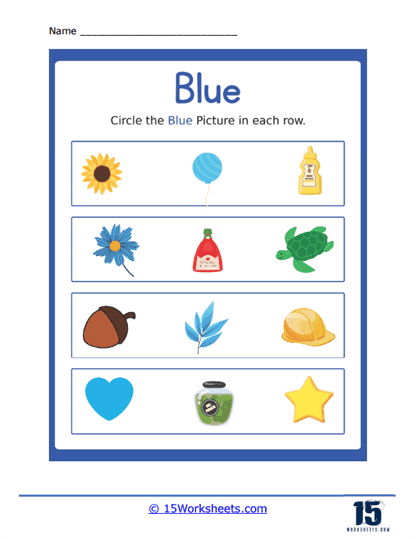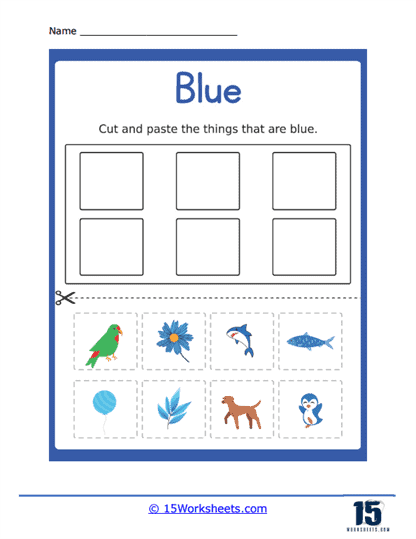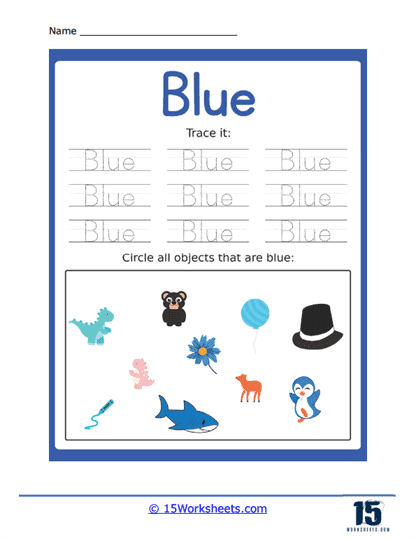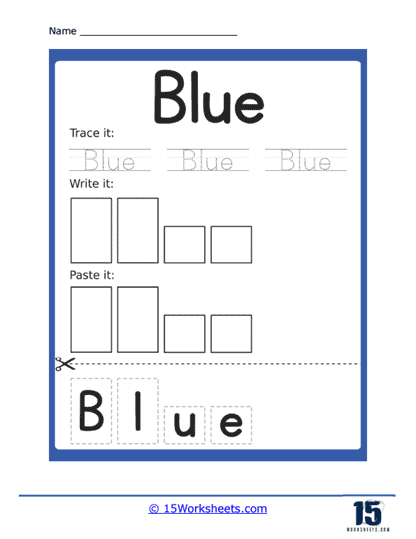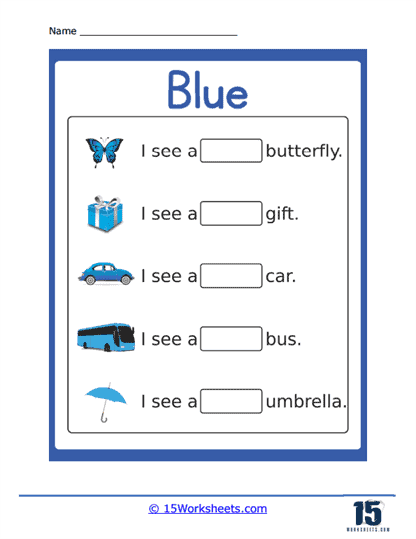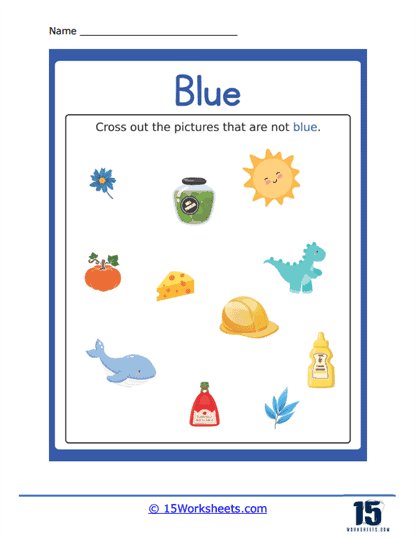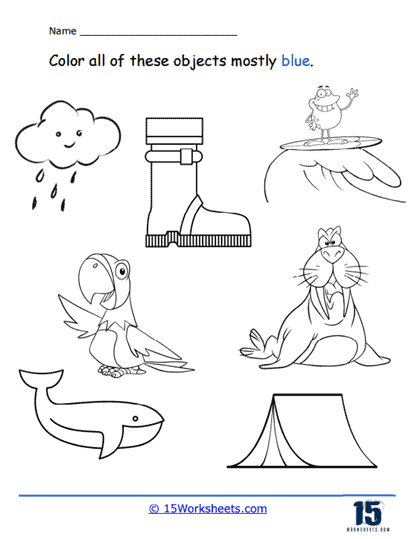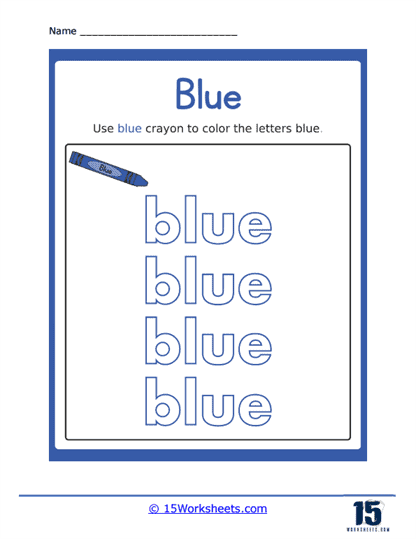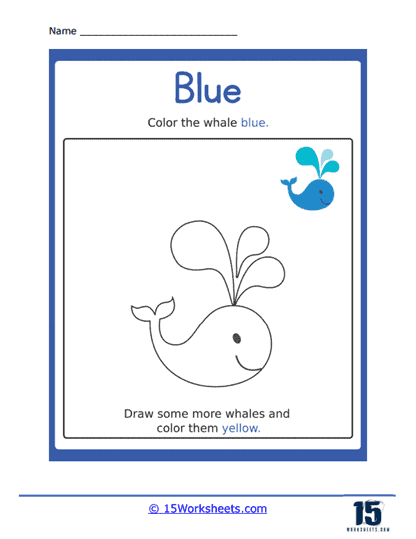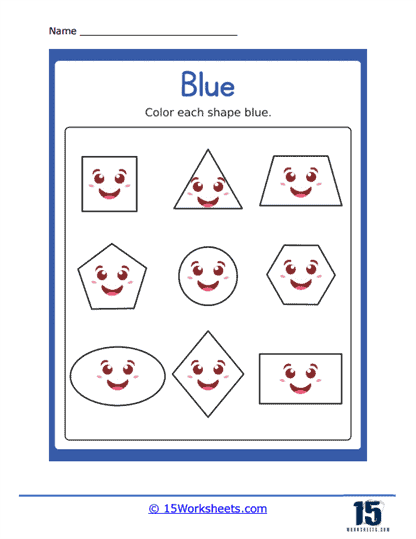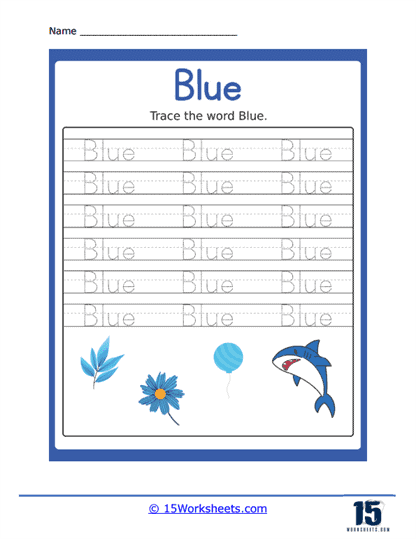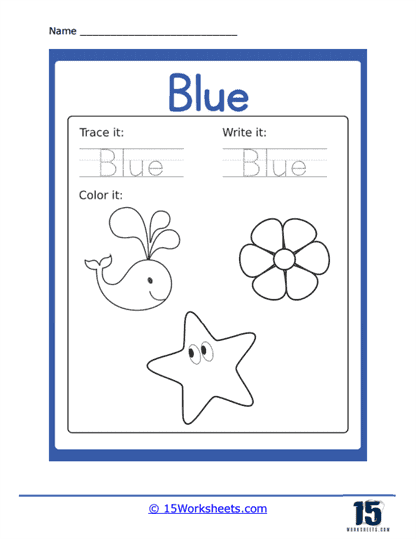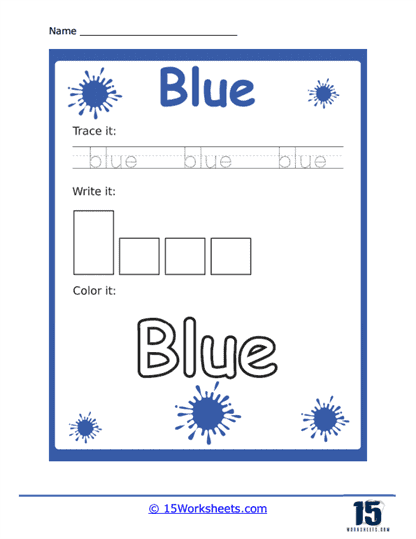Blue Worksheets
All About These 15 Worksheets
Dive into the serene world of the color blue with this comprehensive series of Kindergarten worksheets. This collection is designed to introduce young learners to the concept of colors, specifically on the color blue. Through a variety of interactive exercises, students will develop familiarity with the color blue. These worksheets also help students develop their color recognition skills, enhance their vocabulary, and engage in hands-on activities that promote creativity and critical thinking. Through these worksheets, students will:
- Practice identifying and coloring objects that are blue, reinforcing their understanding of the color and developing visual discrimination skills;
- Engage in tracing exercises that focus on tracing the color word “blue” and writing it independently, promoting letter formation and word recognition;
- And learn about objects and symbols commonly associated with the color blue, fostering their vocabulary development.
Through this engaging series of Blue worksheets, young learners will deepen their understanding of colors while specifically exploring the characteristics and associations of the color blue. By participating in a variety of activities that involve color recognition, tracing, writing, and coloring, students will develop their visual discrimination skills, enhance their vocabulary, and foster creativity.
These worksheets also provide opportunities for hands-on exploration, problem-solving, and cognitive development. By engaging with these exercises, students will develop a love for colors, strengthen their fine motor skills, and cultivate an appreciation for the unique qualities of the color blue. Ultimately, this collection serves as a stepping stone for future color exploration and lays the foundation for a lifelong appreciation of art, creativity, and self-expression.
What is Unique About the Color Blue?
Blue is an enchanting color with a range of properties, cultural meanings, and applications. Symbolically, blue is linked to calmness, tranquility, stability, reliability, wisdom, intellect, loyalty, faith, coldness, and, at times, depression. The color’s significance varies across cultures and religions; ancient Egyptians associated blue with the sky and divinity, while ancient Romans connected it to mourning. In Christianity, blue represents the Virgin Mary’s purity and faith, and in Hinduism, it symbolizes Krishna’s divinity and infiniteness.
Throughout history, blue has been widely used in art and design. In fashion, blue is versatile and popular, demonstrated by classic staples like denim and navy blue suits. The color also appears naturally in various objects and living beings, such as the sky, ocean, certain minerals, and animals.
In science, blue pigments can be found in nature, and in technology, blue LEDs and lasers have been developed for various applications. Numerous idioms and expressions in the English language feature the color blue, such as “blue moon” and “out of the blue.” Overall, blue is a multifaceted and captivating color with diverse symbolic meanings, cultural significance, and uses in art, design, fashion, science, and technology.
Common Things that are Blue in Color
Many common things are blue in color, both natural and man-made. Here’s a list of some examples:
The Sky – On a clear day, the sky appears blue due to the scattering of sunlight by the atmosphere.
Oceans and Lakes – Large bodies of water often appear blue due to the reflection and scattering of light.
Blueberries – A popular fruit known for its blue hue and antioxidant properties.
Blue Flowers – Examples include bluebells, cornflowers, and hydrangeas.
Blue Eyes – A relatively common eye color in humans, particularly among those of European descent.
Blue Birds – Species like the blue jay, bluebird, and indigo bunting are known for their vibrant blue plumage.
Blue Gemstones – Such as sapphire, lapis lazuli, and turquoise.
Blue Clothing – Various shades of blue are popular in clothing, ranging from navy to baby blue.
Blue Paint – Blue is a common color for paint, whether it’s for a home’s interior or exterior.
Blue Ink – Many pens use blue ink, which is a standard color for writing and drawing.
Blue Electronics – Devices like smartphones, laptops, and headphones are often available in blue color options.
Blue Flags – Several national flags feature blue, such as the United States, Australia, and Greece.
These are just a few examples of common blue-colored things, but there are countless other blue objects and phenomena in the world.

